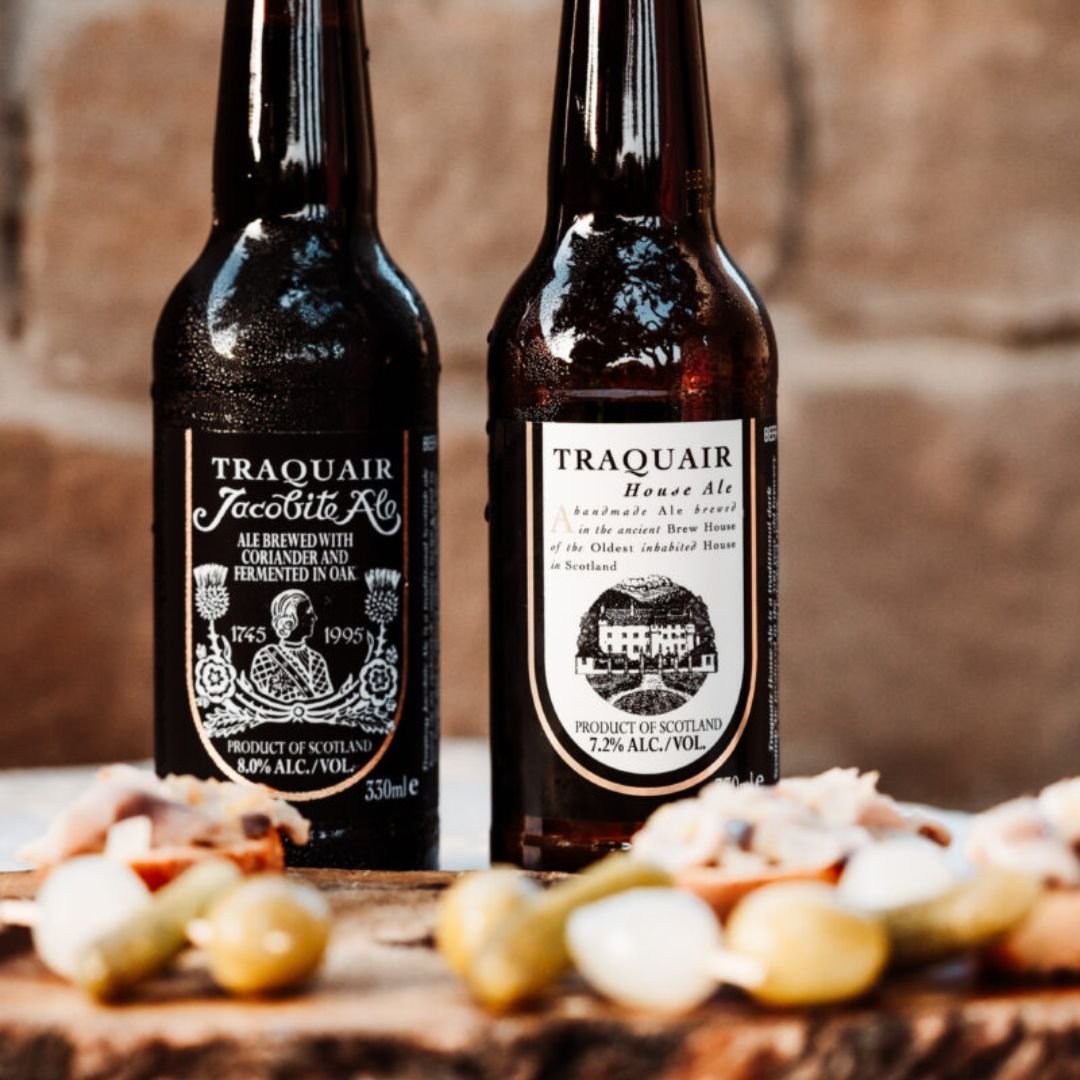Traquair House: Scotland’s Oldest Inhabited House
Traquair House is the oldest inhabited house in Scotland.
It has been lived in for more than 900 years, and it was originally a hunting lodge for the kings and queens of Scotland.
Today, 19 rooms are open to the public.
Visited by 27 Scottish Kings and Queens, Traquair House dates back to 1107 and has been lived in by the Stuart family since 1491.
Originally a royal hunting lodge, Traquair played host to Mary Queen of Scots and later as staunch Catholics they supported the Jacobite cause without counting the cost.
Traquair is a stunning 50-room house.
Some of the iconic rooms include The Drawing Room, containing ancestral portraits and photographs of the current residents.
The Drawing Room is the largest room in the entire house.
The Museum Room contains a mural dating from 1530, one of the oldest to survive in a secular building in Scotland, as well as charters stamped with the royal seals and signatures of the Scottish Kings.
The King's Room, where Mary Queen of Scots stayed in 1566, contains some relics belonging to her and the Jacobites, such as her rosary, crucifix, purse, a silk quilt, and letters bearing her signature.
There is also a Roman Catholic chapel, built in 1829, following the Catholic emancipation.
It is not known when the exact foundations of the house were laid but a substantial structure must have existed by 1107 when Alexander 1 of Scotland signed a royal charter at Traquair.
At this time the castle was used as a hunting lodge for royalty and also as a base where they could administer justice, issue laws and hold courts.
At Traquair, many charters still exist. One, signed in 1175 authorised William the Lion to found a Bishop’s Burgh with a right to hold a market on Thursday.
This small hamlet was later to become the City of Glasgow.
During this period Traquair was nestled in the middle of the vast Ettrick Forest and provided a superb venue for royal hunting parties who came to hunt wild cat, wolves, deer, wild boar and bears who roamed the forest.
A mural painting in the Museum dating back to the early 1500’s depicts some of these early hunting scenes.
After the death of Alexander III in 1286 the peaceful life of the Borders was shattered by the Wars of Independence.
Traquair became one of the many fortified towers or peles that were built along the banks of the Tweed.
When the alarm was raised they could communicate to each other by lighting a beacon at the top of the tower and alert the neighbours of an English invasion.
Traquair was briefly occupied by English troops but returned to the Crown with the accession of Robert the Bruce in 1306.
More peaceful times eventually returned to Traquair in the 15th century and when James III succeeded in 1460 he gave Traquair to his current favourite Robert Lord Boyd, but when the gift was not appreciated he gave the castle to his favourite court musician, William Rogers.
However, he held Traquair for only nine years when he was persuaded to sell it to the Earl of Buchan for the paltry sum of 70 Scots merks (£3 15s).
The Earl of Buchan, a half uncle to the king then gave Traquair to his second son James Stewart who became the first Laird of Traquair in 1491. Since this date the house has remained in the same family.
During the 1500’s and 1600’s the main building was completed and it was during this time that the Lairds of Traquair were at the centre of political power and became associated with Mary Queen of Scots who visited Traquair in 1566.
In the early 1600’s the 7th Laird rose to become Chief High Treasurer of Scotland in 1636 and was granted an earldom.
During this period, Traquair made the transition from a defensive tower house into a family home - the home has been lived in by the Stuart family since 1491.
Today, the ancient property welcomes visitors from all over the world. Enjoy the extraordinary history of this lived in family home.
Visitors can take a tour through the house where there are 19 rooms open to the public - it has an intimate family feel with the main rooms reflecting an eighteenth century décor.
However, step through to the original tower and you can see the bed where Mary Queen of Scots slept and the original stair that became part of the secret escape route for Catholic priests in times of terror.
As you enter the main house you will pass through the original inner front door where it is said the Earl of Montrose hammered in vain when he sought shelter at Traquair following his defeat at the battle of Philiphaugh in 1645.
We’d reckoned a visit to the spooky cellars down below - this is where you can see kitchen items from Victorian times.
Don’t forget to visit the famous Traquair House Brewery, which lies in the wing of the house directly underneath the Chapel.
It dates back to the early 1700’s and was originally a domestic brewery serving the house and the estate.
It was disused in the early 1800’s but never dismantled. It gradually filled with the family junk until it was completely forgotten.
You can also visit the outside grounds, maze, craft workshops, 1745 Cottage Restaurant and the world famous Traquair House Brewery, situated in one of the wings of the house!
Traquair estate comprises around 4,500 acres surrounding the main house which includes four let farms (mainly upland and sheep), 300 acres of mixed forestry, 20 cottages and fishing on the River Tweed.
The income from the estate continues to play an essential role part in helping to maintain the fabric of the house and enables Traquair to be a sustainable business.
There are also approximately 300 acres of mixed forestry on the estate including the ancient woodlands around Traquair House, which include some stunning examples of heritage trees including the yew tree circle and European Firs.
The forests are managed to maintain and enhance biodiversity, protect existing wildlife and conservation designations and to produce a sustainable income to meet all forestry expenditure.
There are four let farms at Traquair mostly farming sheep and some cattle.
The sheep you will see in the fields and hills around Traquair are a mix of Blackface, Texal, Suffolk and some crosses.
During your visit to Scotland, you could even live like royalty and stay at Traquair in one of their luxurious antique furnished rooms!
Traquair has very positive reviews on TripAdvisor, one recent tourist said: “What a special place. What a wonderful staff…
”A privilege to have spent a night in this extraordinary historical home. Lovers of Scottish history will lose their minds.
”We didn’t want to leave, and we will surely return. Thank you, Traquair, for a brilliant stay!”
Another person added: “We did the guided tour, very interesting. The tour guide (Helen) was excellent and very knowledgeable.”
If you’d like to visit, the address is: Traquair House, Traquair, Innerleithen EH44 6PW.
If you enjoyed this blog post, please follow Exploring GB on Facebook for daily travel content and inspiration.
Don’t forget to check out our latest blog posts below!
Thank you for visiting Exploring GB.




















